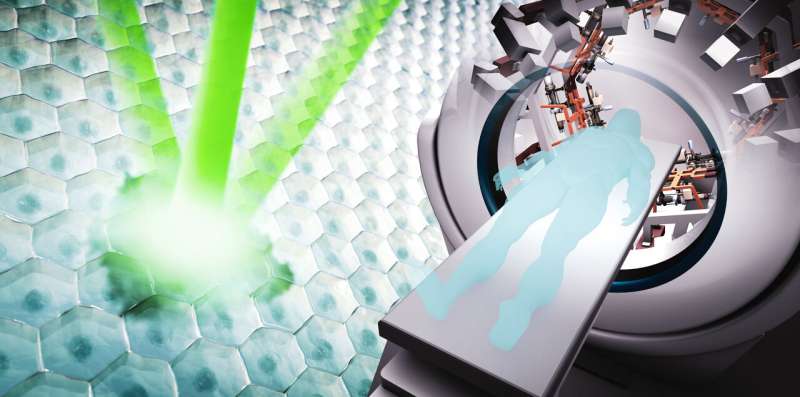The First Cell: Jump-starting the global cancer revolution

“The First Cell” is the title of a revolutionary book written in 2019 by oncologist Azra Raza from the Columbia University Medical Center. In it, she calls for a radical shift in cancer funding away from its current predominant focus on late stage treatments, and towards early detection of what she calls “the first cells.”
Shortly thereafter, a group of noted dignitaries in the field collectively called The Oncology Think Tank convened to begin hashing out this new imperative, and then bring it to fruition. In the popular magazine Scientific American, the group recently published their vision for a future when no cancer will be detected too late to treat. The logical entry point into this path begins with the most important resource now available—extant cancer survivors.
I recently spoke with Azra about her plans to establish The First Cell Center for Cancer Survivors (FICCCS), and asked her to provide a summary for us of how it might work. She said: “There is a crisis in oncology. Cost of cancer care will consume more than 80% of cancer spending by 2030. Only 6% of cancer drugs approved between 2006–2017 showed meaningful, measurable, quality of life improvements while a good 70% show 0% improvement in survival. Twenty years after the human genome was sequenced, and despite an overwhelming focus on gene-centric research, very little has changed for the cancer patient. Yes, we are curing 68% of newly diagnosed cancers, but curing with what? The same slash-poison-burn strategies. And the outcome for the 30% we are not curing, because they present with advanced disease, is no different in 2021 than it was in 1930.
“Trying to treat end-stage cancer with targeted therapies is like taking a heart destroyed by infarction and trying to fix it with a coronary artery bypass. It is clear that the only successful strategy in any disease is early detection, and better still, prevention. It is time to apply this age-old formula to cancer.
“How early is early? The earliest possible stage, at inception, in fact, at the First Cell stage. The problem is that cancer is a silent killer. Even the earliest Stage 1 tumors contain millions of cells. How do we find the First Cell? The answer is simple: By monitoring individuals at high risk of developing cancer for the appearance of the First Cell. Who are these individuals?
“There are many such groups. Individuals with hereditary predispositions (Li Fraumeni syndrome, Lynch syndrome, mutations is BRCA1/2, heavy smokers). Another distinct group is individuals with a history of cancer. In fact, one in five new cancers occurs in a cancer survivor. Due to their ongoing need for follow-up care, cancer survivors are already connected with the healthcare systems. They have detailed medical records available. They come every six months for a regular check-up to the clinic anyway. It would be feasible to monitor them and collect biospecimens on a regular basis. This group offers us the best chance of trapping the First Cell. We propose to establish The First Cell Center for Cancer Survivors (FICCCS) to study this group.
“We propose to obtain non-invasive samples of blood, saliva, urine and feces twice a year from the cancer survivors. Part of the blood will be passed through a filter technology to trap the First Cells on the basis of size (they are giant cells), and the rest for bio-marker and multi-omic studies.
“If two institutions (Columbia and Hopkins or MD Anderson) contribute samples on 2000 cancer survivors each per year, in three years, we will have 12,000 unique subjects. It is calculated that 507 will develop a new cancer in this period. This is a huge number and will provide a plethora of information on the foot-prints of the earliest disease including biomarkers and The First Cell trapped on filters.”
Taking the next steps
Azra notes that a center such as this could be established on a modest budget of $1M/year for the first few years. Presumably, other institutions would follow on the heels of these initial efforts. In a recent interview for Aga Khan University as part of their Special Lecture series, Azra explores some of the cutting-edge research that can help make this all happen. While many fancy new technologies are now available for tracking populations of cells in vivo, they are often applied too late in the cancer cycle to be of any real value to the patients.
For example, we recently explored the Tapestri single-cell tracking platform developed by Mission Bio for exploring clonal populations of hemapoetic cells in acute myeloid leukemia (AML). We also recently investigated new technologies for single-cell imaging of the micrometabolic state of heterogenous cancer cells. Unfortunately, most of the critical patients currently getting access to these technologies are mice, not humans. Furthermore, they are mice that already have well-developed tumors that bear little resemblance to resistant cancer cells that emerge in humans who have already relapsed after chemotherapy.
Source: Read Full Article
